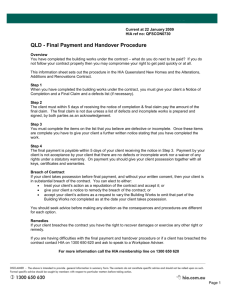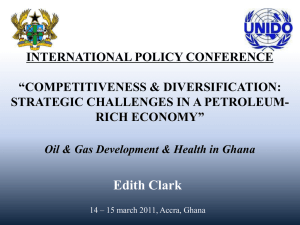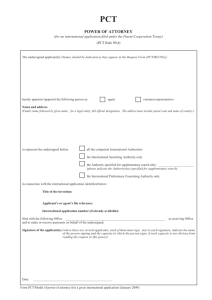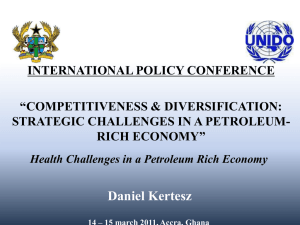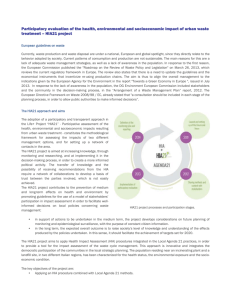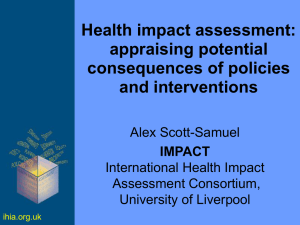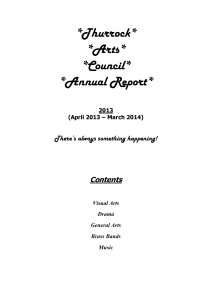Ben Cave - Health in Wales
advertisement
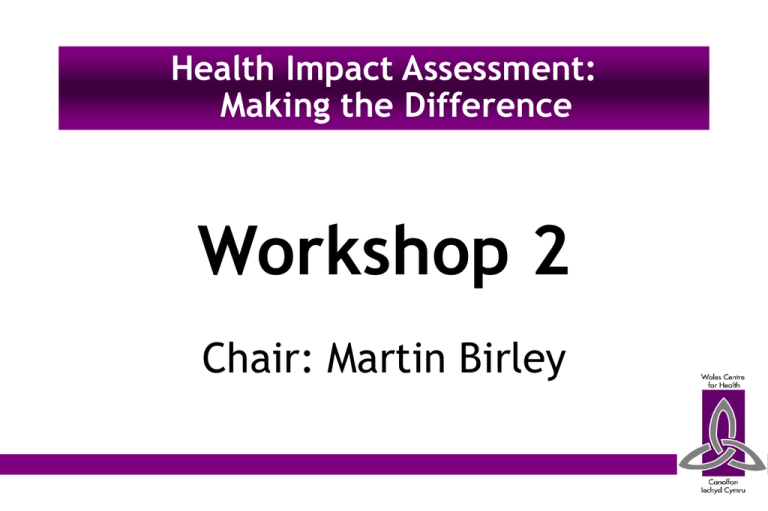
Health Impact Assessment: Making the Difference Workshop 2 Chair: Martin Birley Lessons from Thurrock PCT’s HIA of London Gateway Development 2002/2003 Adapted from slides by Dr Kishor Padki, Director of Public Health, Thurrock PCT Dr Adrian Smith, Sp Reg in PH Medicine Ben Cave 5th April 2006 www.caveconsult.co.uk London Gateway proposal • Joint development by P&O and Shell • Redevelopment of ex-oil refinery site on N.Thames riverside into large freight port (411 hectares) and landside commercial development (10.1 million ft2). • Upgrading local transport links (road and rail links to M25) • Creation of 16,000 new, and 10,000 indirect jobs London Gateway … process P&O Steam Navigation Company & Shell UK submitted three planning applications to Thurrock Council in January 2002. • Outline Planning Application • Harbour Empowerment Order • Transport & Works Act Order First contact for health stakeholders • Thurrock PCT contacted by Thurrock Council for comment (April 2002). • Screening HIA conducted by public health department within the PCT, identifying – Wide range of potential health impacts – Clear requirement for comprehensive HIA – Limited local and regional capacity to conduct such work What happened next … • P&O/Shell appealed against non-determination of duplicate proposal in May 2002. • Request for public inquiry agreed by ODPM (July 2002) • Date for public inquiry set: January 2003 Second contact for the health stakeholders • PCT contacted by planning inspectorate to request participation in public inquiry (August 2002). • Options – Part 1 or Part 2 objector? – Verbal or written submission? – Which topic area? • PCT opted for part 2 written submission and oral evidence under ‘other’ topic areas. HIA process • Board briefing and approval of work programme and timetable • Considering timescale: – London Gateway Group – Thurrock Council’s Public consultation • Legal advice for inquiry representation Preparing a written submission • Comprehensive HIA/HSIA began in September 2002, for submission in February 2003, consisting: – Literature reviews – Extraction of data from Environmental Statements (3 updates) – Quantitative modelling of impact and certainty. • The HIA looked at … – air quality, road and occupational accidents, job quality and employment, visual effects, ground contamination and noise impacts • The HSIA looked at expected health service demand. Barriers to written submission • • • • • Short time scale Weak local and regional expertise and support Lack of robust and validated HIA methods Vast quantity of information to sift Variable level of support by Stakeholders in obtaining bespoke data • Developers obliged to assess all environmental impacts, but not health impacts. Negotiations • Technical working groups • PCT Executive held a meeting with appellants • PCT/Thurrock Council negotiated to include health gain in Section 106 agreements Barriers to negotiation • Weak legislative arrangements to secure health service gains from developers in non housing developments (section 106 agreements) • No legal accountability upon developers to consider impacts upon wider health • Discussions limited to on-site land capital, having little relevance to wider primary care needs. Recommendations • Developers to provide comprehensive occupational health service to all employees • Consider establishing multi agency London Gateway Health Impact group to maximise health benefits. • Consider section 106 planning obligation for primary care modernisation • Impose conditions to prevent detrimental effects. Evidence … Written submission • Health Impact Assessment • Primary Healthcare Impact Assessment Oral evidence • given to the Inquiry in July 2003 … Lessons learnt • Plan HIA as soon as the need is identified, with attention to the considerable resource requirements. • Use the technical working group process where possible – aim to resolve objections before the verbal evidence. • Try to influence inquiry timetable to get unresolved health issues heard (consider being part 1 objector) • Ensure that existing legal frameworks for securing NHS planning gains are robust. • What exactly do you want out of the planning inquiry? • Consider legal representation … Ben Cave PO Box 220 Brighton, BN2 3WJ T 0870 850 4947 E ben.cave@caveconsult.co.uk 7th International Health Impact Assessment Conference Health Impact Assessment: Making the Difference Supported by:
